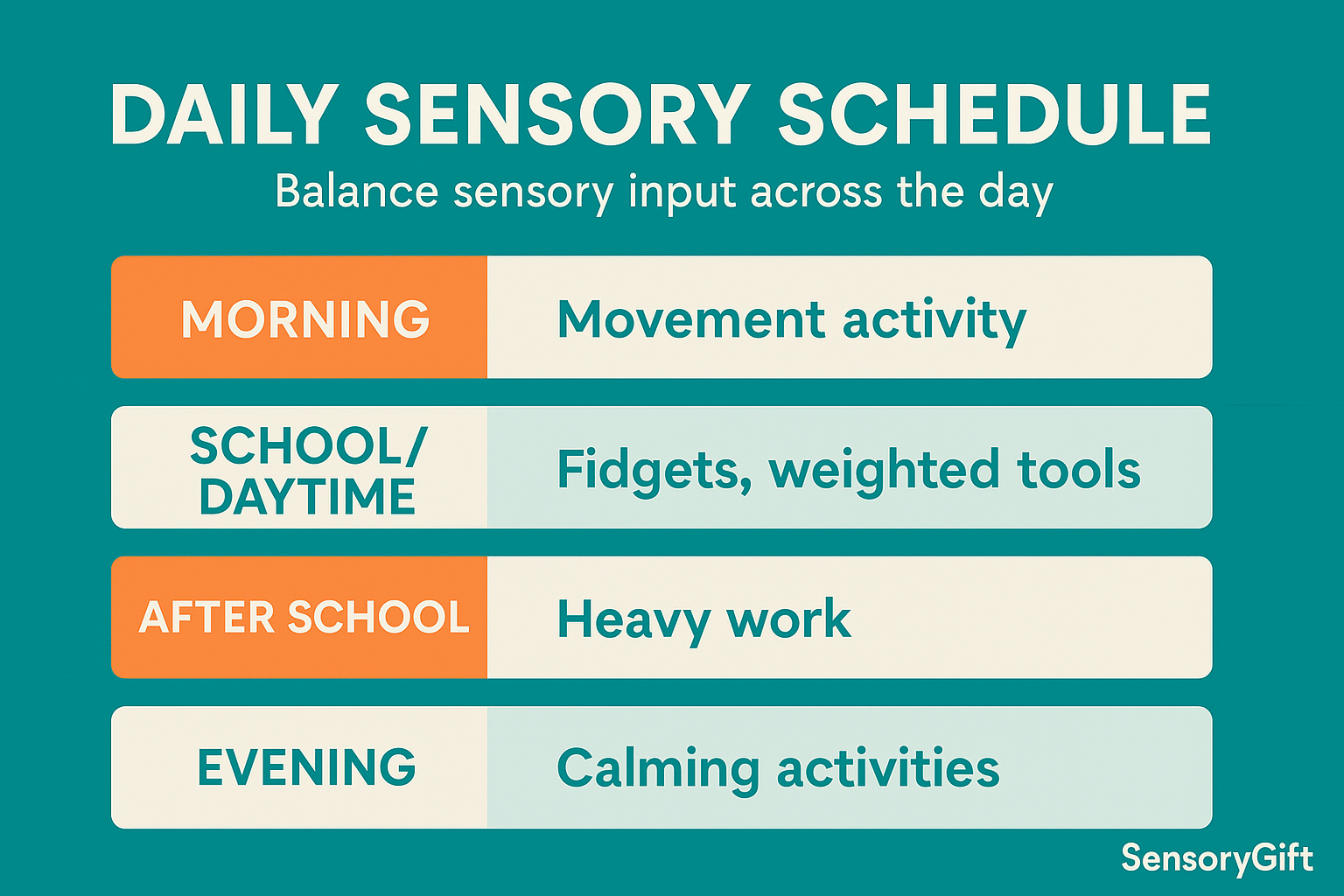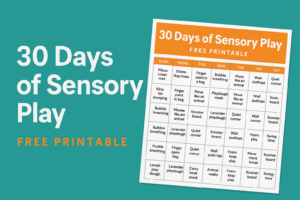Daily Sensory Schedule (Free Printable)
A practical guide to balancing sensory input across the day—movement in the morning, supports during school, heavy work after school, and calming activities in the evening.
Why a Sensory Schedule?
Kids with autism, ADHD, and sensory processing needs often do best with planned input spread throughout the day. A sensory diet schedule provides:
- ✅ Predictability that reduces stress and meltdowns
- ✅ Balanced sensory input at natural transition points
- ✅ A simple framework parents and teachers can follow
The Daily Sensory Framework
| Time of Day | Focus | Examples |
|---|---|---|
| Morning | Movement & alerting input (5–10 min) | Jumping jacks, animal walks, dance break |
| School / Daytime | Focused supports during seated tasks | Fidgets, weighted lap pads, chair bands |
| After School | Heavy work for regulation & reset | Carrying groceries, wall pushes, playground climbing |
| Evening | Calming input to wind down | Weighted blanket, deep pressure massage, bubble breathing |
Sample Activities by Block
- Morning: quick trampoline session, hallway scooter ride, yoga stretches
- School: discreet putty in pocket, gum for oral input, noise-reducing headphones
- After School: chores with “heavy work” (sweeping, carrying laundry), playground climbing
- Evening: bath with epsom salts, dim lights, calming story with soft music
Adaptations by Age
- Toddlers: 2–3 short sensory bursts, mostly gross motor play.
- Elementary: Build in choice (pick between 2 fidgets or 2 heavy work tasks).
- Teens: Encourage self-selection and reflection on what regulates best.
OT Tips for Success
- Anchor sensory input to natural transitions (wake up, recess, after school, bedtime).
- Mix alerting, organizing, and calming activities to balance energy and focus.
- Don’t overload—sometimes 5 minutes is enough to reset the nervous system.
📥 Download the Free Daily Sensory Schedule
Get your copy and start balancing your child’s sensory needs today.
Get the Free PDF


